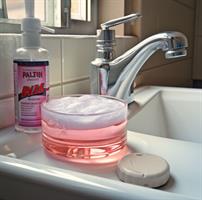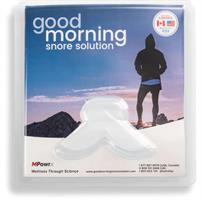Table of Contents
- Cleaning Your Mouthguard
- Mouthguard Care Tips
- Importance of Cleaning During Play
- Using Denture Tablets for Mouthguards
- How Do I Clean My Custom Shock Doctor Mouthguard?
How Do I Clean My Mouthguard?
Cleaning your mouthguard is crucial for hygiene and longevity. Post-use, rinse it under cold water. For a deep clean, use a soft-bristled toothbrush and non-abrasive toothpaste. Additionally, consider soaking it in an antimicrobial solution occasionally. Always ensure it's dry before storing to prevent bacterial growth.
How Do I Care for My Mouth Guard?
Caring for your mouthguard extends its life and ensures safety. Store it in a ventilated case to allow drying. Avoid exposing it to high temperatures, like inside a car on a sunny day, which can alter its shape. Regularly inspect it for wear, and replace when necessary.
Why is it So Important to Clean My Mouth Guard During Play?
Regular cleaning during play minimizes the accumulation of bacteria, preventing potential infections. As you play, the mouthguard can collect debris, saliva, and even blood. Regularly rinsing it ensures cleanliness and protects against germs.
Should I Use Denture Tablets with My Mouth Guard?
Denture tablets can provide an efficient deep cleaning for mouthguards. Dissolve a tablet in water and soak your mouthguard for the duration mentioned on the tablet's package. Rinse thoroughly afterward. This method helps in removing stains, odors, and bacteria. However, always refer to your mouthguard's care instructions before using any cleaning agents.
How Do I Clean My Custom Shock Doctor Mouthguard?
Cleaning and maintaining your Shock Doctor mouthguard is essential to ensure its longevity, and more importantly, to maintain proper hygiene. While Shock Doctor might provide specific instructions with their products, here are general guidelines to help you clean a mouthguard:
-
Rinse After Use:
- Always rinse your mouthguard with cold water or a mouth rinse immediately after each use to remove any debris or saliva.
Deep Cleaning:
- At least once a week, or more often if you think it's necessary, clean the mouthguard more thoroughly.
- Use a toothbrush and non-abrasive toothpaste. Gently scrub the mouthguard on both sides.
- Alternatively, you can use a gentle soap or a mouthguard cleaning solution. Make sure to rinse thoroughly to remove any soap residue.
Avoid High Temperatures:
- Do not expose your mouthguard to high temperatures, such as hot water, direct sunlight, or leaving it in a hot car. This can deform the mouthguard.
Soak:
- From time to time, you can soak your mouthguard in a solution made of equal parts water and mouthwash. This not only helps in cleaning but also gives it a fresh minty taste. However, don't soak it for too long, a few minutes should suffice.
-
Antibacterial Treatment:
- Consider using an antimicrobial solution or mouthguard cleaning tablets specifically designed for dental appliances.
Check for Wear and Tear:
- Regularly inspect your mouthguard for signs of wear, tears, or holes. A damaged mouthguard can be less effective in protection and can potentially harm your mouth.
Storage:
- Always store your mouthguard in a vented container, allowing it to air-dry and preventing bacterial growth.
- Ensure the storage case is clean too. From time to time, wash the case with soap and warm water.
Replace Regularly:
- Even with proper care, you should consider replacing your mouthguard periodically, especially if you notice signs of wear.
Avoid Harmful Cleaners:
- Never use bleach or alcohol-based solutions to clean your mouthguard as these can degrade the material and can be harmful if ingested.
Always refer to any specific care guidelines or instructions provided by Shock Doctor with the product. Proper care will ensure that your mouthguard remains effective and hygienic.




